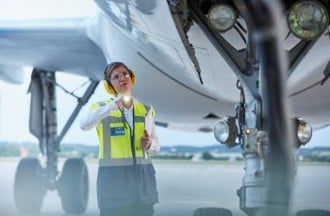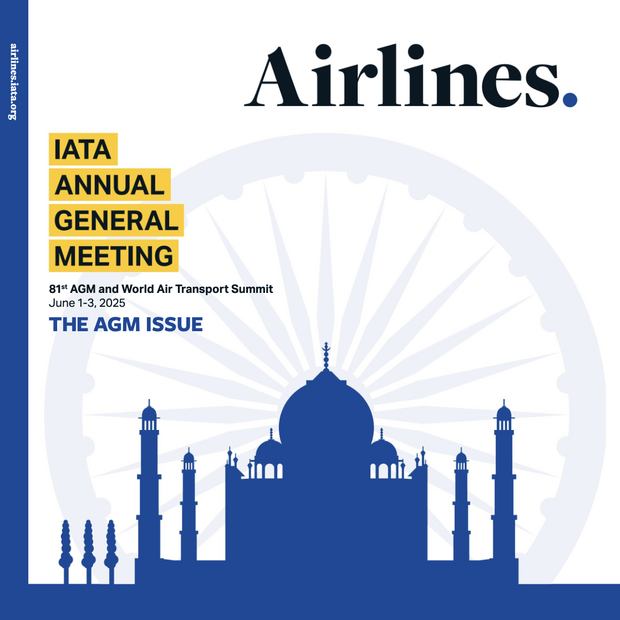
Translations: 国际航协强调航空安全与运行的关键优先事项 (pdf)
L’IATA souligne les priorités essentielles pour la sécurité et les opérations aériennes (pdf)
IATA destaca las prioridades para una aviación segura (pdf)
IATA destaca prioridades para a segurança e as operações da indústria da aviação (pdf)
(pdf) الاتحاد الدولي للنقل الجوي يحدد الأولويات المتعلقة بسلامة وعمليات الطيران
Xiamen – The International Air Transport Association (IATA) highlighted three critical priorities for aviation safety and operations as the World Safety and Operations Conference (WSOC) opened today in Xiamen, China. These are: defending and evolving global standards, fostering a strong safety culture through leadership, and using data to enhance performance amid growing operational challenges.
“The environment in which airlines operate has grown even more complex as conflicts and regulatory fragmentation have proliferated. As a result, we have seen airspace closures, drone incursions and rising global navigation satellite system (GNNS) interference disrupt connectivity, undermine confidence, and threaten safety. Ensuring aviation remains the safest mode of transport requires strong leadership, robust adherence to global standards, and smarter use of data. By focusing on these—industry and government together—we will build a safer, more resilient and increasingly efficient global aviation system that can manage today’s risks and is prepared for those of tomorrow,” said Mark Searle, Global Director Safety, IATA.
Defending and Advancing Global Standards
Global standards are essential to aviation safety. Current standards must be adhered to and future standards must be developed to continuously improve industry safety performance. Currently, this focus revolves around:
- Addressing GNSS Interference: Reports of GNSS interference have increased by more than 200% between 2021 and 2024. Neither spoofing nor jamming of GNSS systems is acceptable. Together with EASA, IATA has launched a GNSS Resilience Plan built on four priorities: monitoring and reporting, prevention tools, backup infrastructure, and civil–military coordination. The next step is for ICAO to advance these solutions through global standards, guidance, and reporting.
- Protecting Aviation’s Radio Spectrum: The radio spectrum essential for aviation navigation, defined in ITU’s global standards, must be safeguarded. The rapid expansion of 5G, and soon 6G, is putting pressure on aviation’s allocations. In several markets, including Australia, Canada and the United States, 5G rollouts have created interference risks near airports and forced costly retrofits. Stronger coordination with telecommunications regulators and realistic timelines for mitigation are urgently needed, along with the development of more resilient on-board systems.
- Timely Accident Investigation Reporting: Global standards under Annex 13 of the Chicago Convention clearly define the need for timely accident investigations. Yet, only 58% of accidents between 2019 and 2023 have produced a final report. Delays hinder the industry’s ability to learn vital safety lessons and create space for speculation and misinformation. IATA continues to remind governments of their obligations while recognizing progress, such as the prompt preliminary reports issued following recent accidents in India, South Korea, and the United States.
Using Data to Enhance Performance
Data is transforming aviation safety, delivering the insights needed to anticipate risks and enhance performance. Through the Global Aviation Data Management (GADM) program, which integrates the Flight Data eXchange (FDX), Incident Data eXchange (IDX), and Maintenance Cost Data eXchange (MCX), IATA is enabling data-driven decision-making across airlines and regulators.
Areas where data is making a difference include:
- Turbulence Aware: IATA’s Turbulence Aware platform shares data in real-time, enabling pilots and dispatchers to mitigate the risks stemming from inflight turbulence. Participation in the platform grew 25% over the past year, with 3,200 aircraft including Air France, Etihad, and SAS now sharing real-time turbulence data to enhance flight safety and efficiency.
- Predictive safety insights: The SafetyIS database, drawing on in-flight data from 217 airlines, enables predictive analysis. For example, early identification of a spike in collision-avoidance alerts at a Latin American airport allowed swift action to reduce risks.
- Risk-based IOSA: The risk-based IOSA audit model is well-established in using data to tailor audits to each airline’s operational profile. Already it has resulted in more than 8,000 corrective actions that are strengthening safety.
Fostering a Strong Safety Culture Through Leadership
Leadership is central to a strong aviation safety culture. Strong safety leadership creates an environment where employees are empowered to raise concerns and are confident that issues will be resolved quickly and effectively.
To reinforce this, IATA has developed two key initiatives:
- Safety Leadership Charter: Promoting eight core principles of safety leadership, the Charter now covers around 90% of global traffic, strengthening a culture built on leadership, global standards, and data.
- IATA Connect: Bringing together 5,600 users from over 600 organizations, IATA Connect enables access to IOSA documentation, the Safety Issue Hub, and Safety Connect, and will soon expand to include ISAGO users.
For more information, please contact:
Corporate Communications
Tel: +41 22 770 2967
Email: corpcomms@iata.org
Notes for Editors:
- IATA (International Air Transport Association) represents some 360 airlines comprising over 80% of global air traffic.
- You can follow us on X for announcements, policy positions, and other useful industry information.
- Fly Net Zero

